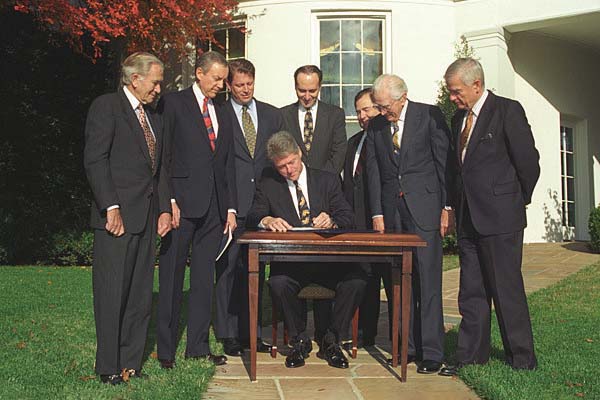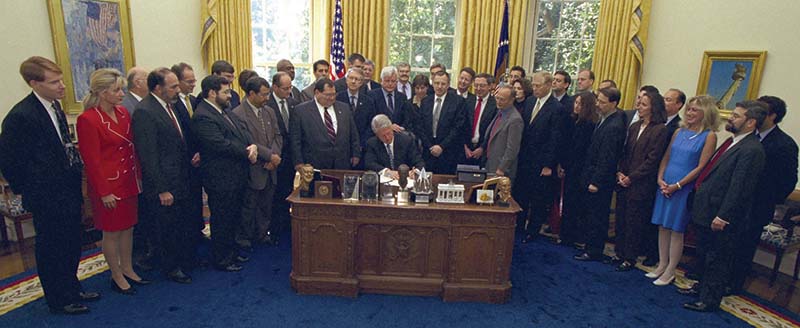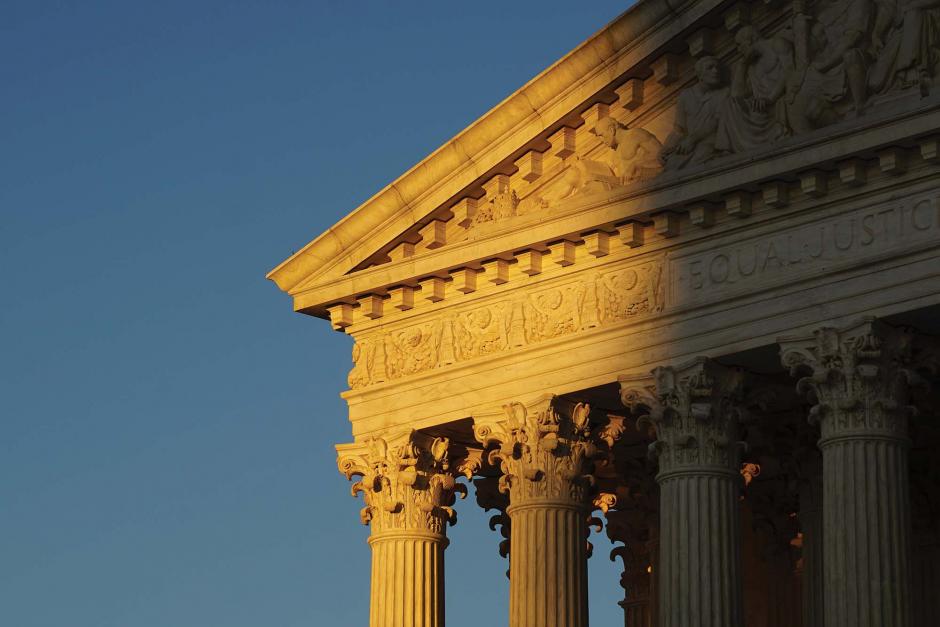Reflections on a Free Exercise Renaissance
Eric Treene March/April 2022Today’s national conversation around religious free exercise is radically different in both character and scope from that of three decades ago. What has changed, and why? A former special counsel for religious discrimination in the U.S. Department of Justice provides a front-seat perspective on 35 years of transformation.
When I was a law student in the late 1980s, religious liberty was a quaint backwater of constitutional law. Yes, there had been some big Catholic school funding decisions in the Supreme Court in the past decade, some more recent cases about how many reindeer neutralized a crèche in a holiday display, and some important unemployment compensation cases involving persons fired for holding to religious conscience. But compared to the powerhouses of free speech, due process, or equal protection, the religion clauses seemed to be barely a blip on most Supreme Court watchers’ radars.
That was certainly the case with my fellow law students. I vividly recall when we were discussing the just-decided case of Lyng v. Northwest Indian Cemetery Protective Association, a challenge by Native Americans to a National Forest Service logging road through sacred lands. The Native Americans lost their free exercise clause challenge, but what was particularly notable was how they lost. Since the government owned the land in question, the Supreme Court reasoned, it did not have to balance in any
way the importance of its interest in building the road versus the magnitude of the harm to the plaintiffs’ religion. That struck me as wrong. Where the ability to exercise one’s faith lay completely in the hands of the government, it seemed the free exercise clause required the government at least to give some reason justifying its actions. Justice Brennan, the Court’s liberal stalwart, who had been a hero of my classmates as we discussed the free speech clause, wrote an impassioned dissent. But when the professor asked if anyone thought the Court got it wrong, mine was the lone hand raised in the lecture hall. Somehow, the free speech hawks in the class, quick to ask the government to shoulder all sorts of burdens to allow dissenting voices to be heard, were not willing to burden the government at all to accommodate religion.
Low Ebb
Some religious communities had long been acutely aware of the need for protection of free exercise. Jehovah’s Witnesses, whose door-to-door solicitation and evangelism in public places were often targeted by officials, appeared frequently in Supreme Court cases. Faiths that strictly observe the Sabbath, including Jews and Seventh-day Adventists, knew all too well how the law fell short, and had been involved in pushing for Sabbath accommodation since the enactment of Title VII in 1964. Orthodox Jews were disappointed that the Supreme Court in 1986 had ruled that an Air Force psychologist could be forced to remove his yarmulke while in uniform (Congress subsequently passed a legislative fix). But free exercise of religion did not seem to capture the imagination of the broader religious community, the legal community, or society generally.
The low-water mark for free exercise came with the Employment Division v. Smith decision in 1990. There the Supreme Court rejected the claim of an Oregon Native American who lost his job as a drug counselor for using peyote, a controlled substance used by many Native Americans in religious ceremonies. While acknowledging that enforcement of general laws like drug laws may cause very significant burdens on certain faiths, the Court held that as long as such laws didn’t target religion and applied equally to everyone, they didn’t violate the free exercise clause.
Smith prodded religious and civil rights groups to action on free exercise to an unprecedented degree. Groups from across the religious and political spectrum advocated for, and obtained by a unanimous vote in the House and a 97-3 vote in the Senate, passage of the Religious Freedom Restoration Act (RFRA) in 1993. Depending on whom you speak with, RFRA either restored the pre-Smith law or expanded it. In any event, RFRA required that government action imposing a “substantial burden” on religious exercise be justified by a compelling government interest, pursued through the least restrictive means possible on religious exercise.
Expansion

The renewed attention to free exercise of religion that RFRA represented came at a time of demographic change in the United States. The Christian cultural consensus, which had long maintained such things as Sunday closing laws, In God We Trust on currency (added in the 1950s), and Bible readings in public schools, was fracturing. Increasing numbers of people had no religious affiliation, and membership in the largest Protestant denominations that had been bulwarks of the establishment was in decline. At the same time, evangelical Christians had risen in number and prominence, with a more urgent view of religion in their daily lives than had previously been the norm. A range of diverse religions, including Islam, Sikhism, and Hinduism, grew as well, along with unfamiliar needs for accommodation of religious holy days, dress, and practices. Orthodox Jews, with strict needs to observe the Sabbath, kosher laws, and other observances, had increased as a percentage of American Jewry. Thus while there was no longer a general assumption that religion, or at least Christianity, would be broadly assumed and acknowledged in civic and working life, there were growing demands by significant minorities of Christians and members of numerous other faiths for meaningful accommodations.
In addition to the passage of RFRA, the 1990s saw a number of moves toward greater protection of free exercise, driven largely by two factors. First was the increasing demand for accommodation, especially by religious minorities. The second was the complaint by many Christians that in removing establishment clause problems like school-sponsored prayer, personal religious expression had been needlessly suppressed as well. The Clinton Administration took two significant actions in response. First, the White House issued an executive order on religious expression in the federal workplace, requiring religious speech by employees with coworkers and religious symbols in personal work space to be treated equally with other types of personal speech. The Department of Education likewise issued guidelines for religious expression in public schools, explicitly allowing students gathering to pray before school, sharing religious observations in assignments, and other personal expressions that occur while at school or participating in school events. This expanded the principle of the more modest Equal Access Act of 1984, which had required high schools with noncurricular clubs to give equal opportunity for student-initiated religious clubs, to a much broader range of activities and covering all student age groups. At the same time, Supreme Court and lower federal court decisions were constitutionalizing this equal access principle in a wide range of contexts.
In 1997 the Supreme Court held that while RFRA was valid against the federal government, Congress lacked authority to extend it to the states. Despite this blow, religious communities continued to advocate for greater protections for religious freedom from infringement by state and local governments. In 2000 Congress passed the Religious Land Use and Institutionalized Persons Act (RLUIPA) by unanimous consent. RLUIPA’s land use provisions protect the ability of places of worship, religious schools, and faith-based social service providers to build, own, and rent property without discrimination or unjustifiably burdensome regulation. RLUIPA’s institutionalized persons provision applies the RFRA standard to prisoners and other persons in government institutions, thus protecting access to religious diets, opportunities for worship and religious education, and other accommodations.
Off the Sidelines
Religious communities also continued to press for equal access to public meeting spaces and to equal access for governmental funding in various ways. A string of Supreme Court decisions, culminating in Good News Club v. Milford in 2001, established that religious groups could not be turned away from renting facilities after school because of their religious expression. A coalition of Catholic and evangelical parents and economic libertarians advocated for school choice—the idea that while the government may not fund religious schools directly, the Constitution permits giving funds to parents in vouchers or scholarships who can then give them to the school of their choice, whether religious or nonreligious, private or public. The Supreme Court upheld such a program in 2002. These access cases and school choice cases, along with the Clinton Administration guidelines, marked a sharp shift from the Christian cultural consensus of 50 years earlier. Public schools were no longer reflective of the majority Christian religion in various nominal and watered-down ways, something that was unfair and often oppressive to religious minorities and the nonreligious, and that were, at best, a lukewarm inspiration of faith for Christians. Schools instead simply made room for religious expression by students, allowing religious groups to participate in the civic life surrounding the school, such as after-school activities. And they were part of a public education system that increasingly made more room for authentically religious private schools.
A related equal-access development was President George W. Bush’s Faith-Based and Community Initiative, which provided that religious organizations be allowed to compete equally for federally funded social service grants. Under the initiative, direct grants to religious organizations must be used only for secular social services and must serve all persons regardless of religion. However, it is different for voucherized programs, where recipients are able to freely choose which program to go to, with the funds simply following their choices. In these programs the religious organization can fully integrate religion into its services, thus allowing, for instance, faith-based residential drug treatment programs. The Obama Administration continued this policy, as have subsequent administrations. That this approach has now become routine highlights the degree to which society has come to embrace a pluralistic religious model, where the government leverages faith-based groups to provide societal needs but does not directly fund religious programs and thereby pick approved religious winners and disapproved religious losers.
Another notable development in the 2000s was the response to the backlash against Muslims and Sikhs following the September 11 terror attacks. I was at the Department of Justice at the time, and we saw a sharp increase in hate crimes against these groups, along with employment discrimination and accommodation claims involving members of these groups. RLUIPA land use cases involving mosques also increased. By 2010, 13 percent of the Department of Justice’s RLUIPA land use investigations involved Muslims (mostly mosque construction cases), despite their making up about 1 percent of the population. By 2016 the percentage of these investigations had climbed to 38 percent.1 Muslims have also featured prominently in recent Supreme Court decisions on religious freedom, including a 2014 RLUIPA decision upholding a Muslim prisoner’s right to wear a short beard, and a 2015 Title VII decision requiring a retail employer to accommodate a Muslim woman’s headscarf.
Perhaps the development highlighting just how much religious freedom issues have become part of public discourse and the legal landscape is the sheer volume of cases now being heard by the Supreme Court. In the Court’s 2019 term it decided a RFRA case and two free exercise cases on its regular docket: a contraceptive mandate case, a case involving religious schools hiring for ministerial positions, and a school choice case. It also decided two cases involving emergency challenges to COVID restrictions on worship, and vacated a free exercise case concerning the Catholic Church in Puerto Rico. In the 2020 term the Court decided three religious liberty cases: a free exercise case involving a Catholic social service agency, a case concerning a college student’s religious expression, and a RFRA case regarding damages for violations. The court also vacated a RLUIPA case involving Amish religious objections to septic regulation, and issued four more opinions on COVID restrictions. The 2021 term so far is following the same pattern, with three religion cases so far on the docket, including a RLUIPA case involving the access of pastors to an execution chamber, a school choice case in Maine, and a religious expression case involving Boston City Hall.
Evolving Challenges

Since I was in law school, religious liberty has become a more significant constitutional and social issue, and the increase of protections for diverse faiths is palpable. In many ways, though, there has been a leveling off of key disputes: government-endorsed religion, outside of ceremonial legislative prayer and historic monuments, is in decline. Schools have adopted a healthy avoidance of official religious endorsement while protecting student expression, and accordingly the number of student religious expression disputes has decreased. The concept of equal access for religious groups appears to have reached a point of fairly broad acceptance and dwindling controversies.
This does not mean issues of religious liberty are going away. Indeed, since deeply held convictions such as faith will inevitably come into conflict with other societal interests, disputes and legal cases will continue. Cases involving federal land impacts on Native Americans remain common, and the Lyng case I encountered in law school remains the rule today. Workplace accommodations also continues to be a pressing issue. The Workplace Religious Freedom Act (WRFA), which would strengthen Title VII’s currently weak religious accommodation obligation for employers, has been introduced in numerous Congresses, but has yet to advance.
One area of particular friction is the intersection of religious liberty and LGBT rights. As noted, objections to religious groups using public spaces just because they are religious have dwindled. The conflicts that arise today are more likely when particular religious viewpoints conflict with LGBT equality. In one case being litigated in California, the Fellowship of Christian Athletes was excluded from equal access at a public high school not because it is religious, but because FCA will not hire LGBT persons as leaders and therefore violates the school’s views on inclusion. These issues undoubtedly will remain significant sources of debate and litigation in the coming years.
The trajectory of religious liberty since I was in law school has been a positive one, both for faith and for maintaining a pluralistic democracy. We have moved away from the old model where many looked to the government to make symbolic but often awkward gestures toward faith that inevitably left some people out, to a model where the government has taken substantial steps to create space for the authentic religious exercise of individuals and groups. In place of public school teachers leading generic monotheistic prayers, we protect students’ right to pursue their faith whether alone or with others. RLUIPA protects our right to build places of worship and religious schools; RFRA protects against a wide range of infringements; religious groups have equal access to public places and resources for social services and education; and courts are increasingly protecting the free exercise of persons of diverse faiths. I’ve followed these issues for 35 years, and it seems to me that religious liberty is now getting the attention it deserves in our constitutional order.
1 See Report on the Tenth Anniversary of the Religious Land Use and Institutionalized Persons Act (September 2010); Update on the Justice Department’s Enforcement of the Religious Land Use and Institutionalized Persons Act: 2010-2016 (June 2016).
Article Author: Eric Treene
Eric Treene is an attorney in Washington, D.C., and teaches at the Catholic University of America and Reformed Theological Seminary in Vienna, Virginia. He served for 19 years in four administrations in the U.S. Department of Justice as special counsel for religious discrimination.
